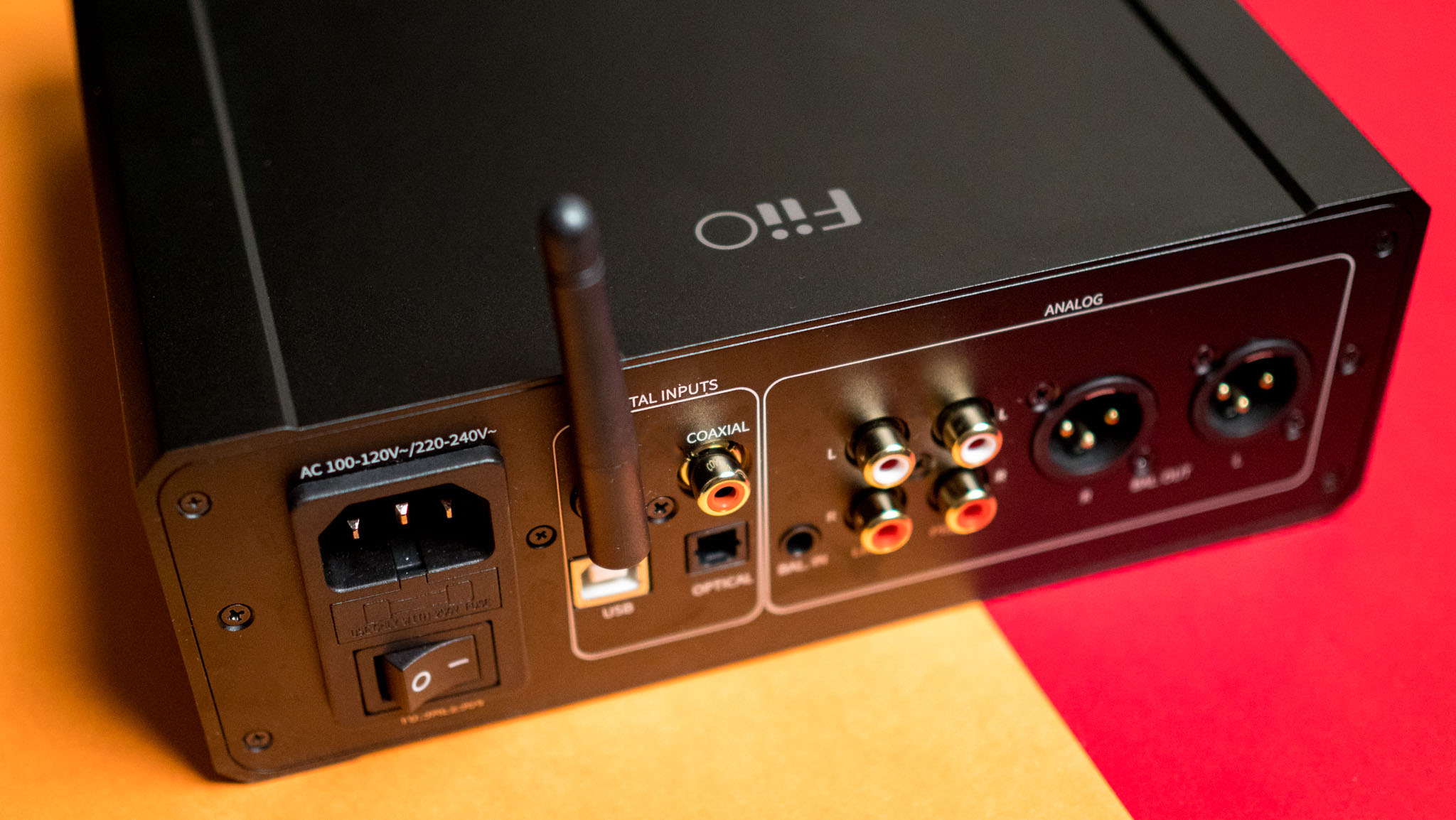Fiio began specializing in the high-end section two years in the past, and that led to a deluge of premium merchandise, together with DACs, IEMs that used a mixture of three totally different driver items, and community streamers. Whereas these merchandise had been aimed on the high-end section, they nonetheless delivered an excellent feature-set, and undercut their rivals by a substantial margin.
Nothing illustrates this as a lot because the K9 Professional DAC; Fiio did all the suitable issues with the product, and having used it for over a yr and a half, I am satisfied that there is not something higher at this worth level. The one draw back is that the K9 Pro still costs $849, making it inaccessible to a mainstream viewers.

That is the place the K9 comes into the equation. Fiio rolled out the K9 final yr, and on the outset, there actually is not a lot of a distinction between the usual mannequin and the K9 Professional; each use related ESS DACs, THX amps, Bluetooth connectivity with the identical set of codecs, and an an identical design. The distinction is that the K9 is available for $499, simply over half the asking worth of the K9 Professional.
Clearly, Fiio designed the K9 to fit into the mid-range section, filling the void between the $200 K7 and $849 K9 Professional. However by retaining the identical design and a whole lot of the identical options as the more expensive K9 Professional, Fiio is working the chance of cannibalizing its high-end product, as a result of after utilizing the K9 for six months, I do not actually see the necessity for getting the K9 Professional.

Beginning with the design, the K9 makes use of the identical chassis because the K9 Professional, and that is one thing Fiio is vulnerable to doing. It did the identical with the K7, which retained the chassis of the K5 Professional, and on the time, the model famous it was to avoid wasting manufacturing prices and make it simpler to get the product out the door.

Clearly, the model is utilizing the identical technique right here, and the K9 is almost an identical to the K9 Professional. The one distinction is the dearth of the Professional branding on the entrance of the unit, and the quantity dial that dominates the entrance fascia does not have gold accents. That mentioned, the labels beneath all of the connectors and button are actually in white and have higher distinction, and so they’re considerably simpler to learn. This continues to be a problem on the K9 Professional, with the gray labels merging with the black chassis, making it arduous to make out any of the markings.

The K9 has the identical connectors up entrance, so that you get a balanced 4.4mm port, 4-pin XLR that has a mud cowl, and a single-ended 6.35mm connector. The standing LED highlights the mode in use, and you should utilize USB, optical, coaxial, line in, and Bluetooth. On the backside, you get the ability button, achieve toggle — excessive, medium, and low — together with an enter selector, and output toggle that allows you to use the K9 as a devoted DAC, headphone out, or in a configuration that sees it performing as a preamp.

On condition that the K9 makes use of the identical black chassis because the Professional mannequin, it does not actually draw a lot consideration to itself. Either side of the unit have a vented design to ship passive airflow, and that is wanted as a result of there isn’t any lively cooling. You get the identical THX branding on the prime, nevertheless it is not embossed, and the brand new Fiio brand is etched above.

It is on the again the place issues get fascinating, with the K9 providing the identical set of connectivity choices because the K9 Professional. You get an antenna to ship a secure Bluetooth sign, and there are USB-B, coaxial, and optical inputs together with a 4.4mm balanced and the standard RCA. You additionally get RCA and 3-pin XLR out.

The one factor lacking on the K9 is USB-C connectivity, and MQA rendering. Whereas I’d have appreciated to see USB-C, it is not an enormous deal, and truthfully, you get a ton of different ports on the DAC. MQA is used largely by Tidal, and as the usual itself is out of favor, its omission does not really imply something.

What I like in regards to the K9 retaining the identical design is that it may be mounted in a horizontal or vertical orientation, and also you get a stand within the package deal that allows you to mount it vertically. Coming in at 5.7lb (2.6kg), it’s simply as heavy because the K9 Professional, and it is not designed with portability. The package deal incorporates a USB cable, 3.5mm to six.35mm connector, and an extra fuse.

The FiiO Management app continues to be nice, and it provides you exhaustive management over nearly each space of the K9. You’ll be able to see the lively mode, choose Bluetooth audio codecs, modify the lighting across the quantity knob, set EQ, and modify the channel stability.

Coming to the audio aspect of issues, the K9 makes use of two 32-bit ESS Sabre ES9068AS DACs. The two-channel DAC sits one tier beneath the ES9038 Professional that is featured within the K9 Professional, however you do not actually discover a lot in the way in which of distinction between the 2 in every day use. You as soon as once more get two THX AAA 788+ amps, and the K9 makes use of the identical Qualcomm QCC5124 Bluetooth modem as its costlier sibling to ship Bluetooth 5.1 connectivity.

Speaking about Bluetooth, you get all of the audio codecs you may ever want: AptX, AptX LL, AptX HD, AptX Adaptive, and LDAC. The LED gentle on the quantity knob adjustments primarily based on the codec in use, and it’s a good visible indicator.
When utilized in USB mode, the K9 is ready to go as much as 768kHz/32-bit over PCM and DSD512. That goes all the way down to 192kHz/24-bit over coaxial, and 96kHz/24-bit through optical. The K9 is an all-in-one system, and it has loads of energy to drive nearly any audio system, together with essentially the most demanding planar headsets. Conversely, it is ready to energy delicate IEMs with none points by any means — all you may have to do is ready the achieve to low.

The K9 is ready to ship as much as 1W of energy at 16Ω, 1.5W at 32Ω, and 200mW at 300Ω over the 6.35mm port. Switching to the balanced 4.4mm and XLR ports, you get 1W of energy at 16Ω, 2W at 32Ω, and 780mW at 300Ω. I examined the K9 with loads of headsets, together with the excellent Audeze MM-500, Audeze LCD-GX, and Fiio’s FT3, FT5, FX15, and Dan Clark Audio’s Aeon X. The DAC did an excellent job with each system, and as I mentioned in the beginning, I do not see the necessity to justify paying a premium for the K9 Professional any longer.
Fiio DACs often ship a clear sound with none coloration, and the K9 isn’t any totally different. Like all nice DACs, it simply will get out of the way in which, and permits audio gadgets to shine; utilizing the MM-500 with the K9 was simply as pleasurable as with the K9 Professional. Sure, the K9 Professional delivers a greater low-end when testing with the identical headsets, and it has cleaner mid-range and elevated highs. That mentioned, the variations are barely noticeable, and in all honesty, the K9 does simply nearly as good a job in every day use.

The place the K9 stands out is by pitting it towards the K7; on this state of affairs, the variations are simply noticeable. The K9 delivers a significantly better soundstage and dynamics, and you may instantly discover the distinction in tonality between the 2 DACs — the K9 is simply in a position to ship a vibrant sound that you aren’t getting with the K7.
Finally, the K9 presents the perfect worth in Fiio’s in depth DAC catalog. It has many of the options that made the K9 Professional an excellent alternative, and the perfect half is that it prices simply $499. That is fairly the discount contemplating simply what you are getting with this DAC.

The K9 has an identical feature-set as the more expensive K9 Professional, however you needn’t pay as a lot, making it an excellent alternative in Fiio’s DAC catalog.


